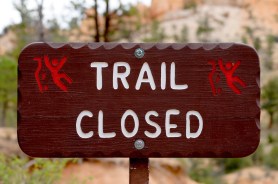

Scientific fact: koalas are adorable. How can you not love these furry, cuddly marsupials? Sadly, koalas are endangered; their population has dropped significantly in recent years due to threats like habitat loss and disease, including infections like chlamydia.
Videos by Outdoors
Luckily, cute animals tend to get support when they need it, and koalas are no exception. Here are five ways scientists are trying to save koalas.
1. Chlamydia vaccinations
Koalas may not be the first thing you think of when you hear the word chlamydia, a common STI among humans, but koalas with chlamydia have become a problem of concerning proportions. In an interview with NPR, Mathew Crowther, a conservation biologist at the University of Sydney, says within a population of koalas in northern New South Wales, the percentage of koalas infected with chlamydia has grown from 10% in 2008 to 80% today.
The infection can impact koalas’ ability to climb trees and find food, and it also impacts their fertility. To combat koala chlamydia, scientists are trying a new approach; they’re vaccinating about half of the koala population in the Northern Rivers region of New South Wales and monitoring them.
2. Biobanking
Scientists are freezing and storing koala sperm to help ensure the viability of the species as the number of koalas declines in the wild. This process, called biobanking, is an important tool in conservationists’ toolbox, because it preserves the genetic diversity of a shrinking population. Scientists can use banked koala sperm to support breed-for-release programs among captive koalas.
3. Assembling genome data
As koala populations decline, scientists have sprung into action to better understand koala genetics by assembling a complete koala genome and making it readily available to researchers. Studying a species’ genetic makeup offers insights into its unique susceptibility to diseases.

For instance, by mapping genome data from koala populations across Australia, researchers can better understand how differences in populations’ genetic makeup helps them live in different climates, eat different diets, and fight off diseases or succumb to them.
4. Advocating for policy
Without curbing problems like habitat destruction in places where wild koalas live, no amount of vaccinating, biobanking, and genome mapping is going to make a difference in saving endangered koalas.
The Australian Government has a conservation strategy in place for koalas that protects koala habitat from further destruction, includes steps for restoring koala habitat, and supports scientific research. Scientists advocate for, help create and refine, and implement policies by supplying data to policymakers.
5. Educating the public
The public is hugely important when it comes to protecting endangered species. By making their research available to other scientists, conservation nonprofits, journalists, and directly to the public, scientists can spread the word about specific threats to koalas, like chlamydia and habitat loss. When the species is adorable, it makes scientists’ job way easier, because who doesn’t love a koala?










Pingback: 7 of the World’s Cutest Animals That Will Brighten Your Day